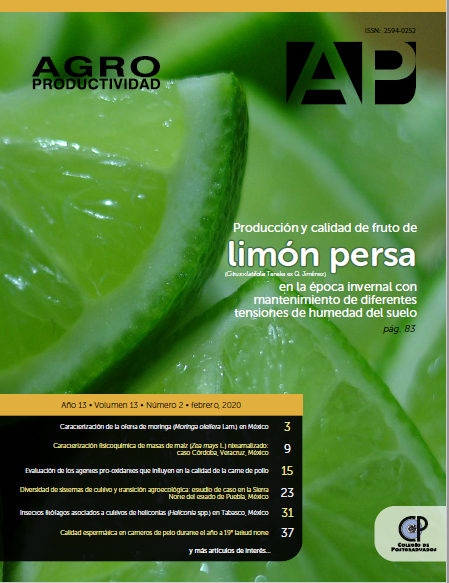Evaluation of pro-oxidizing agents that influence the quality of chicken meat
Main Article Content
Keywords
Heat treatments, lipid ooxidation, meat products.
Abstract
Objective: Analyze the main exogenous pro-oxidizing agents in chicken breast meat and its effect on the oxidative phenomenon.
Design / methodology / approach: Chicken breast (Pectoralis major) in the form of patties (25g) was used to establish the different treatments: T1 - ground chicken breast, T2 - freeze and thaw cycle, T3 - vacuum packed, T4 - dehydrated, T5 - cooking in a water bath, T6 - addition of NaCl, T7 - ??cooking on the grill and T8 - exposure to LED light. After treatment, they were stored at 4 ° C 15 d and analyzed at 0, 3, 6, 9, 12 and 15 d. The variables analyzed were weight loss, color, pH, titratable acidity and TBARS, using a completely randomized design (DCA) and the Tukey test (P ? 0.05).
Results: It was confirmed that ground chicken meat, subjected to heat treatment (grilled-T7 and water bath-T5) and stored in refrigeration at 4 ° C, presented greater pro-oxidant action reflected in the greater weight losses, luminosity and TBARS.
Limitations / implications: Not having different levels of oxidative application in each treatment.
Findings / conclusions: It is possible to understand the lipid oxidation of chicken meat under the study of the application of differents pro-oxidizing agents.

